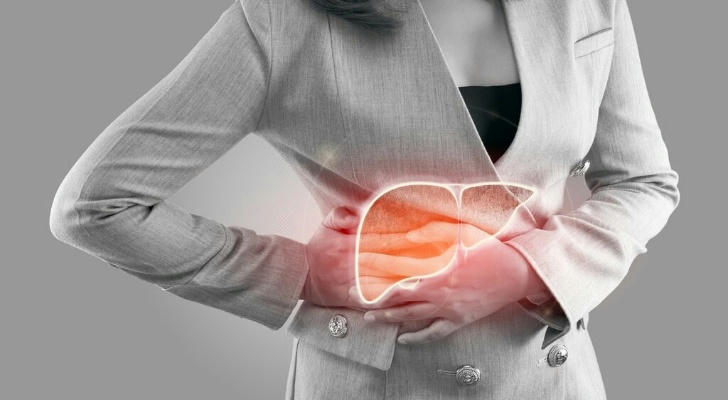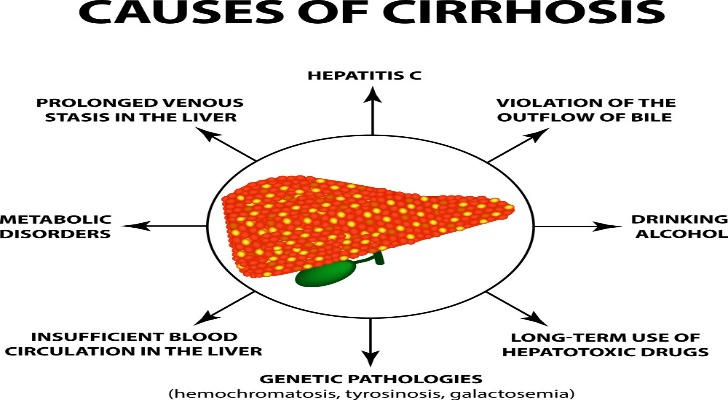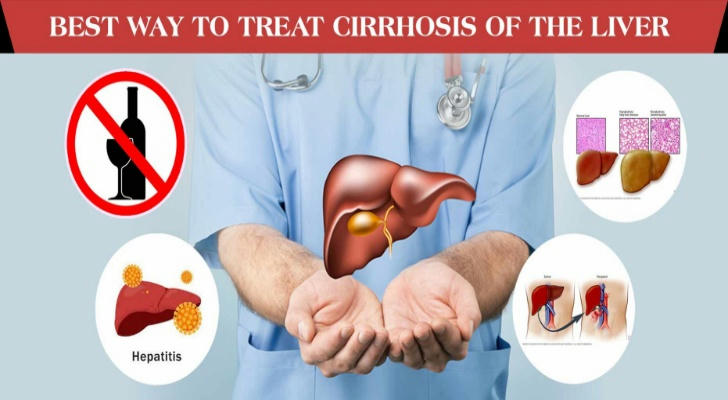Do You Know What Cirrhosis Of The Liver Is?
Cirrhosis is a serious liver disease that refers to changes in the structure and function of the liver due to long-term damage. Over time, normal liver tissue is gradually replaced by fibrous tissue, which may eventually lead to liver failure. Understanding the causes, symptoms, diagnosis, treatment and prevention measures of cirrhosis is vital to public health.

Causes
The occurrence of cirrhosis is usually related to a variety of factors, the most common of which include:
Viral hepatitis: Infection with hepatitis B and C viruses, in particular, is an important cause of cirrhosis. China is a country with a high incidence of hepatitis B, and many patients develop cirrhosis after long-term infection.
Long-term alcohol abuse: Excessive drinking can cause direct damage to the liver, leading to alcoholic liver disease, which then develops into cirrhosis.
Non-alcoholic fatty liver disease (NAFLD): Closely related to metabolic syndromes such as obesity, diabetes and high blood lipids, it is an increasingly common cause of cirrhosis in recent years.
Autoimmune diseases: In autoimmune hepatitis, the body's immune system mistakenly attacks healthy liver cells.
Drugs and toxins: Certain drugs (such as long-term use of certain painkillers) and environmental toxins can also cause liver damage.

Symptoms
In the early stages, many patients may not have obvious symptoms, so regular physical examinations are very important. When symptoms occur, common ones are:
Fatigue and weakness: Often feel weak and lack of energy.
Loss of appetite: Loss of interest in food, resulting in weight loss.
Jaundice: Yellowing of the skin and eyes, which is caused by impaired bilirubin metabolism.
Ascites: Fluid accumulates in the abdomen, causing the abdomen to swell.
Spider nevi and palmar erythema: Small blood vessels on the skin (spider nevi) and red palmar erythema (palmar erythema) appear.
Easy bleeding or bruising: Due to insufficient synthesis of clotting factors, patients may easily bruise or bleed.
Diagnosis
Diagnosing cirrhosis usually requires a comprehensive consideration of the patient's medical history, physical examination results, and auxiliary examinations. Common methods include:
Physical examination: The doctor will examine the patient's skin, eyes, and abdomen to look for symptoms such as jaundice and ascites.
Blood test: Liver health is assessed by testing liver function indicators (such as transaminases, bilirubin, etc.).
Imaging examination: Ultrasound, CT or MRI can help observe structural changes in the liver, such as size, shape and whether there is ascites.
Biopsy: In some cases, the doctor may recommend a liver biopsy to obtain tissue samples for further analysis.
Treatment
Currently, the treatment of cirrhosis focuses on controlling the cause, relieving symptoms and preventing complications:
Alcohol abstinence: For patients with alcoholic cirrhosis, complete abstinence is an important measure to improve the condition.
Drug treatment: For cirrhosis caused by viral hepatitis, antiviral drugs can be used to control viral replication.
For autoimmune diseases, immunosuppressants can be used to slow the progression of the disease.
Nutritional support: Provide a high-protein, high-calorie, high-vitamin diet to help improve nutritional status.
Complication management: For example, ascites can be relieved by diuretics or puncture and fluid extraction; endoscopic treatment is required for gastrointestinal bleeding.
In advanced cases, if liver function is severely impaired, liver transplantation may need to be considered.

Prevention
The key to preventing cirrhosis is to reduce risk factors:
Vaccination: Vaccination against hepatitis B can effectively prevent infection with the hepatitis B virus.
Healthy diet and lifestyle: Maintaining a healthy weight, eating a balanced diet, avoiding excessive alcohol, and exercising regularly can help reduce the risk of non-alcoholic fatty liver disease.
Regular physical examinations: Especially those with a history of chronic liver disease should undergo regular physical examinations to detect and treat potential problems early.
Avoid unclean medical procedures: For example, do not share personal items such as razors and toothbrushes to reduce the risk of virus transmission.
Conclusion
In summary, cirrhosis is a serious and preventable disease. By understanding its causes, symptoms and treatments, we can take proactive measures to reduce the risk of disease and increase the rate of early detection. The public should enhance their awareness of this disease so that they can seek medical treatment in time and take appropriate measures to protect their health.
